Mitt hem är Copacabana [My Home Is Copacabana] (Arne Sucksdorff, 1965)
Aug
2
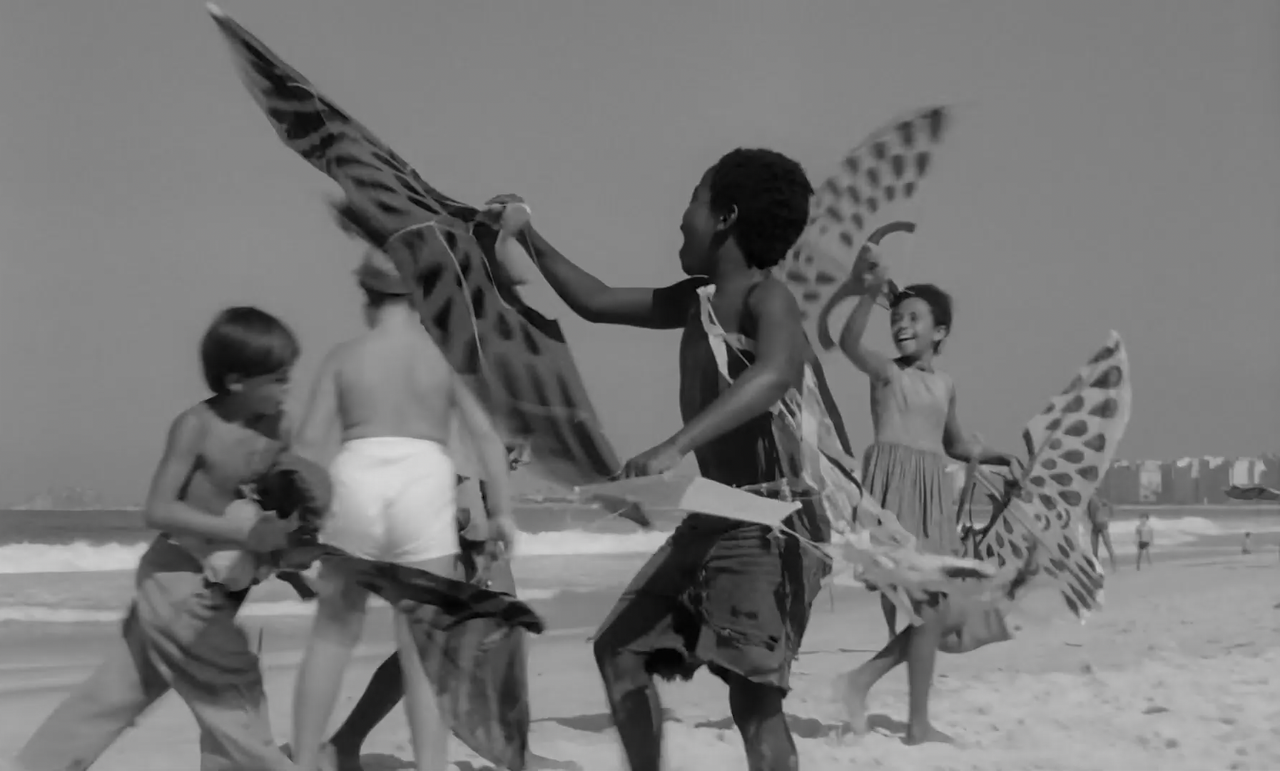
The favela children on the beach, playing with kites and mingling with the rich kids. DP: Arne Sucksdorff.
A kite in celebration of 浜松まつり, the Hamamatsu Kite Festival, which takes place on May 3–5*
Favela kids steal kites and sell them on in this Copacabana-set Nordic drama.
Toninho Carlos de Lima, Rico in the movie, was not a homeless kid from the favelas but lived in a house with his family when he was send to Sweden to promote Mitt hem är Copacabana. A wealthy Swedish couple offered to adopt him, and his natural mother reluctantly gave in hoping to prevent a life of crime for her son (source). That too, dear reader, is colonialism.
* the Bales 2025 Film Challenge for August is not date-related but lists, for the most part, the colours of the rainbow.
1960s
“It's a lot of work, ya know, just staying alive.”Gli intoccabili [Machine Gun McCain] (Giuliano Montaldo, 1969)
Jul
30
1968
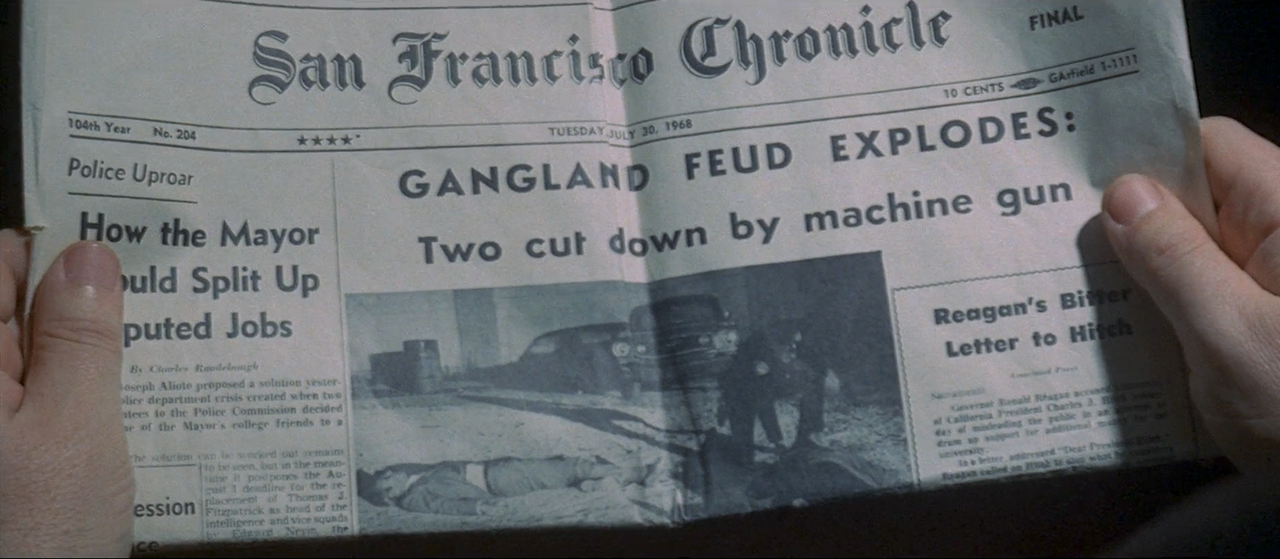
Man's hands hold up the July 30, 1968 San Francisco Chronicle. The headline reads GANGLAND FEUD EXPLODES: TWO CUT DOWN BY MACHINE GUN. It's a Tuesday. DP: Erico Menczer.
– Rosemary Scott
Paparazzi (Jacques Rozier, 1963/1964)
Jul
29
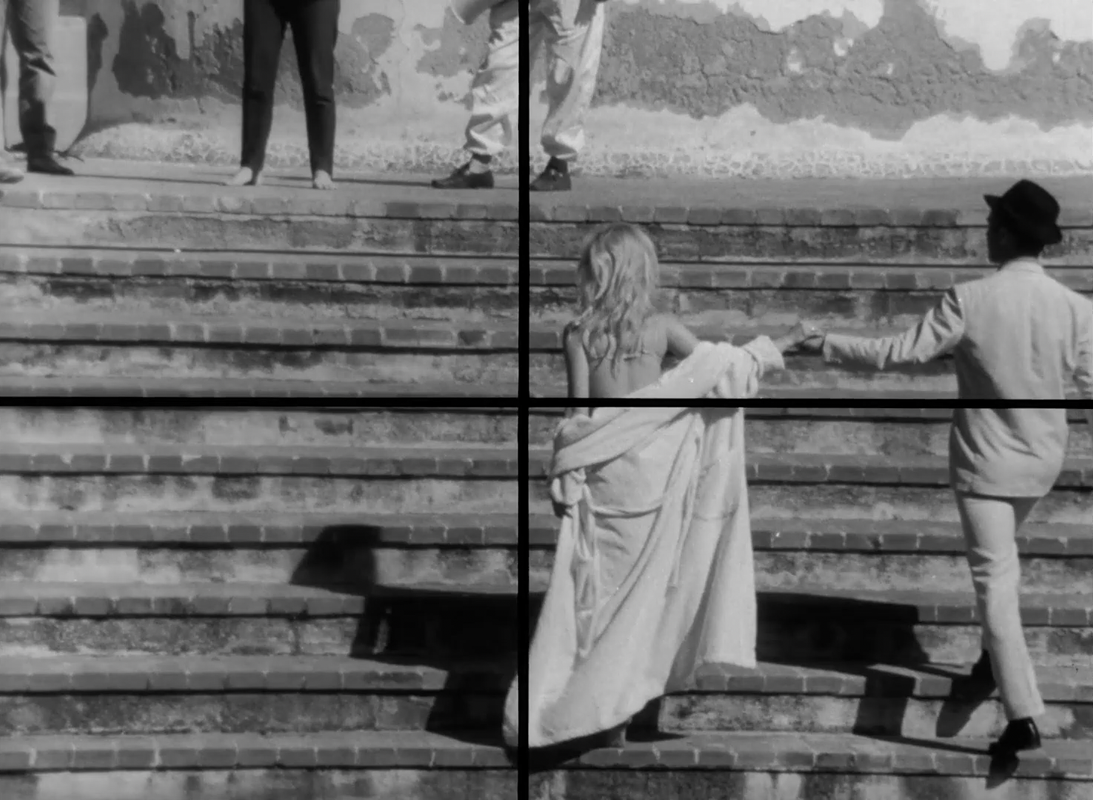
Brigitte Bardot and her co-star Michel Piccoli making a show of ascending the stairs of Casa Malaparte as seen through a paparazzo's lens. DP: Maurice Perrimond.
A character has a camera or takes photos*
It buzzes on the set of Le mépris. These mosquitos, the Italians say paparazzi, swarm La Bardot and making it merely impossible for anyone – themselves included – to do their job. But Bardot knows them, too well, and gives them what they want, when she wants it.
* the Bales 2025 Film Challenge for July is, for unknown reasons, mostly not date-related and follows some sort of vacation narrative.
“Bruno, I've spent the best two days of my life with you… I mean it!” Il sorpasso [The Easy Life] (Dino Risi, 1962)
Jul
26
a boys' night out
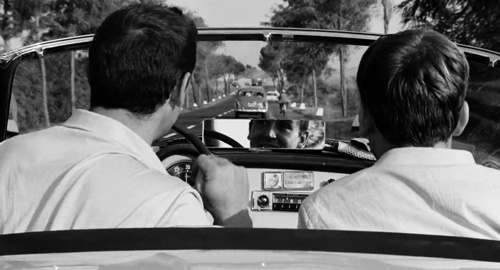
Bruno (Gassman) and Roberto (Trintignant) driving along Italy in their sports car (via). DP: Alfio Contini.
A boys' night out: men having fun on their own*
– Roberto Mariani
Serious law student Roberto (Jean-Louis Trintignant) goes on an accidental road trip with bon vivant Bruno (Vittorio Gassman).
* the Bales 2025 Film Challenge for July is, for unknown reasons, mostly not date-related and follows some sort of vacation narrative.
Marie II: “But I'm happy.”
Marie I: “I'm so happy, too.” Sedmikrásky [Daisies] (Věra Chytilová, 1966)
Jul
25
a girls' night out

Marie I and Marie II (Jitka Cerhová and Ivana Karbanová respectively) having a heck of a time. DP: Jaroslav Kučera.
A girls' night out: women having fun on their own[???]*
Two young women called Marie pull destructive, anarchist pranks.
* the Bales 2025 Film Challenge for July is, for unknown reasons, mostly not date-related and follows some sort of vacation narrative.
Dillinger è morto [Dillinger Is Dead] (Marco Ferreri, 1969)
Jul
25
1934

Glauco (Michel Piccoli) reading the July 25, 1934 Chicago Daily Tribune that he found in the pantry. The headline states CLEAR UP DILLINGER MYSTERY. DP: Mario Vulpiani.
“We still remember our high wall. Even the day we first climbed it, filled with curiosity. The sadness of the discoveries of those years seemed devastating to us. Then we wondered how we could have forgotten it so suddenly.” Vysoká zeď [The High Wall] (Karel Kachyňa, 1964)
Jul
23
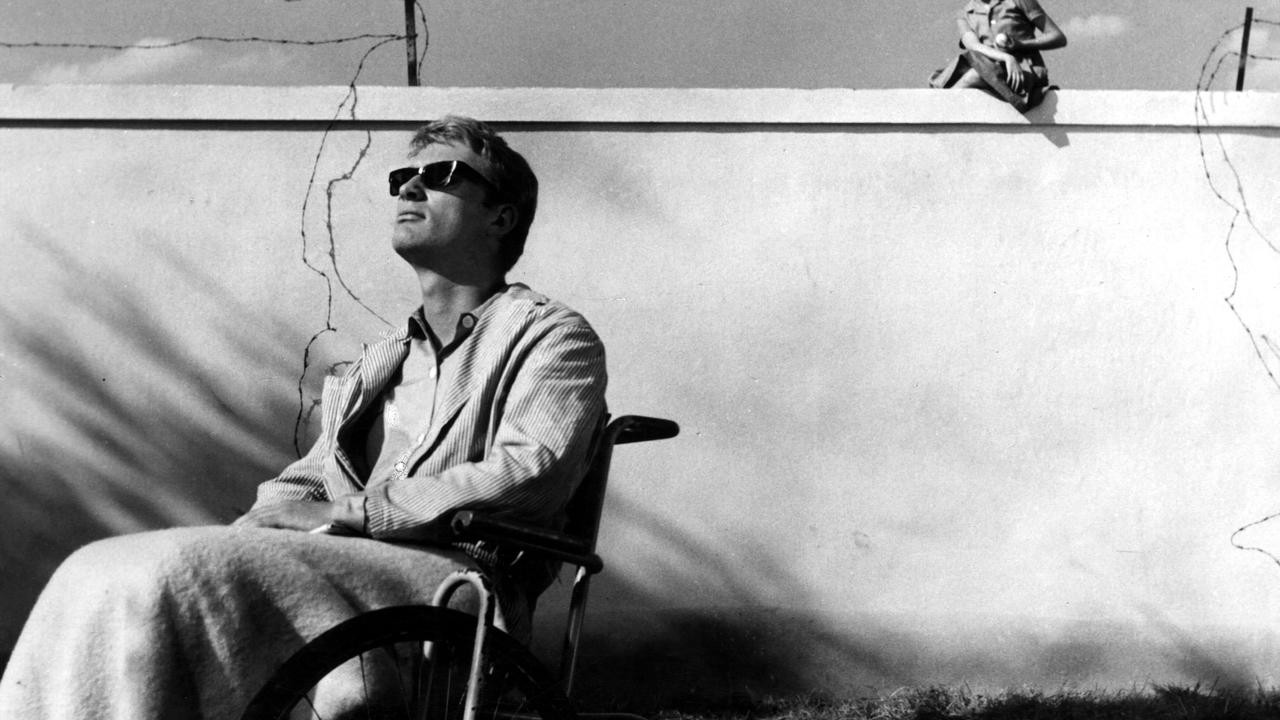
The young man (Vít Olmer) rests in the sun with Jitka (Radka Dulíková) observing him. DP: Josef Vaniš.
Someone is in an ambulance or hospital*
– prologue
It's summer in Prague. Jitka, a girl on the cusp of womanhood, follows a stray cat and finds a tall hospital wall. Behind it, a young man in a wheelchair rests. The girl and the man connect.
* the Bales 2025 Film Challenge for July is, for unknown reasons, mostly not date-related and follows some sort of vacation narrative.
“I thought you'd be hungry, maybe.” La piscine [The Swimming Pool] (Jacques Deray, 1969)
Jul
20

Marianne (Romy Schneider) and Harry (Maurice Ronet) shopping. Note the plethora of atypical-for-France ingredients, and how the packaging hasn't changed up to today. DP: Jean-Jacques Tarbès.
Shopping for food*
Schneider and Ronet's characters go get their groceries in a tiny, surprisingly well-stocked-with-Asian-food-items French corner shop, ánd manage to find all the ingredients needed. One rookie mistake: Uncle Ben's. Of all the rice in the world…
* the Bales 2025 Film Challenge for July is, for unknown reasons, mostly not date-related and follows some sort of vacation narrative.
“I even tried not to think. I was face-to-face alone with the sea, far from cruises and beaches, fulfilling a childhood dream put off year after year. I lost myself completely in the play of shadow and light, sinking into a lethargy heightened by the water. That state of passivity, of complete availability, promised to last much longer than the euphoria of one’s first summer dip into the ocean. I could easily see myself spending a whole month this summer this way.” La collectionneuse [The Collector] (Éric Rohmer, 1967)
Jul
18

Daniel (Daniel Pommereulle), wrapped in bedsheets, and Adrien (Patrick Bauchau) rest in the grass. The colour of summer is courtesy of the master, DP Néstor Almendros (via).
Someone's all bundled up*. No list of summer films is complete without Éric Rohmer.
– Adrien
An art dealer and his writer friend plan to spend the summer together in a villa on the Côte d'Azur. A young woman, a collector of sorts, disrupts their retreat.
* the Bales 2025 Film Challenge for July is, for unknown reasons, mostly not date-related and follows some sort of vacation narrative.
血は渇いてる [Chi wa kawaiteru / Blood Is Dry] (Yoshishige Yoshida, 1960)
Jul
17
beer
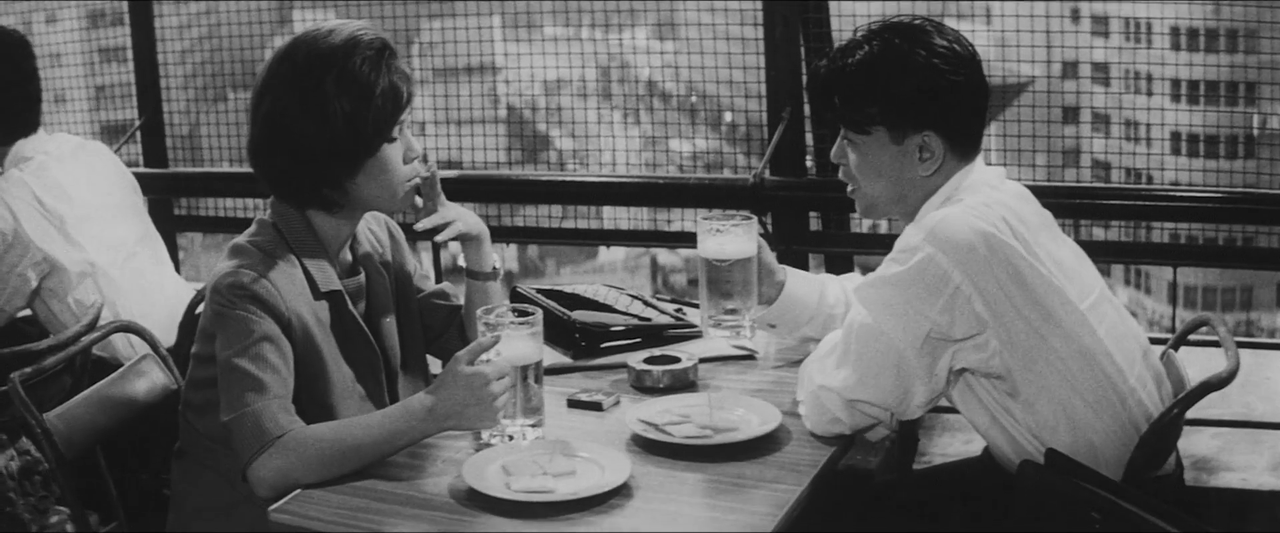
A man and woman share a meal in a top-floor restaurant. The view is numerous identical modern buildings. She's smoking and they both clutch large beer mugs. Two dishes hold small bits of food with toothpicks stuck into them. DP: Tōichirō Narushima.